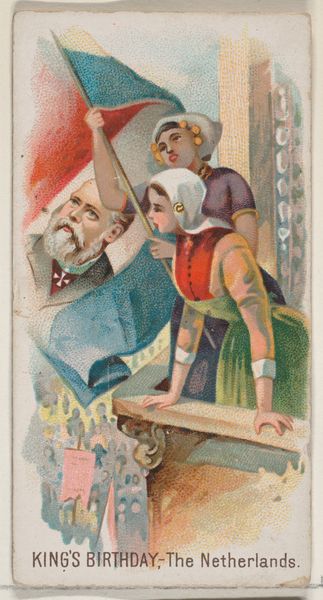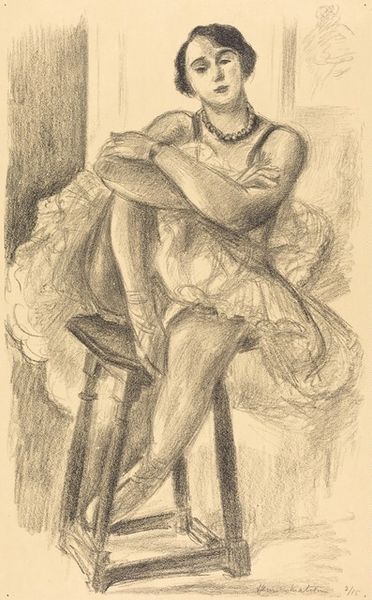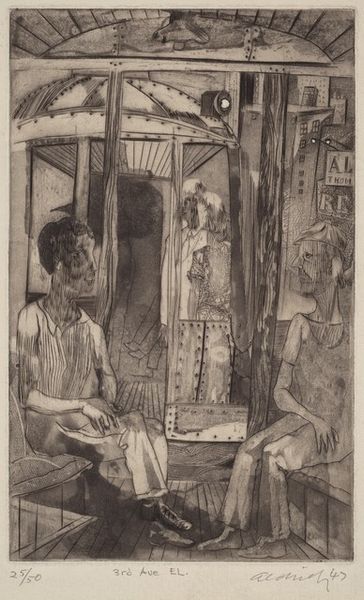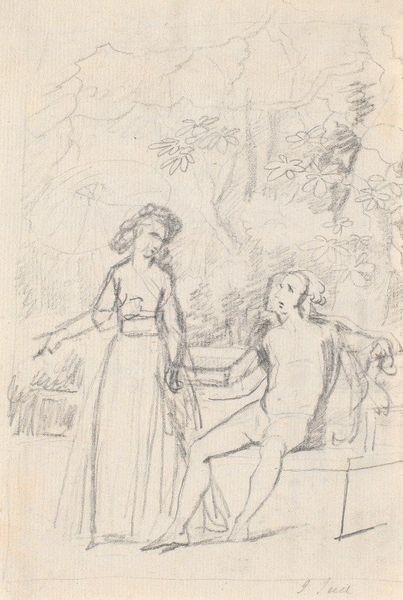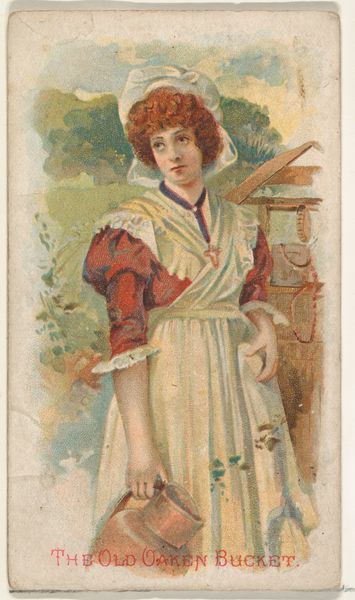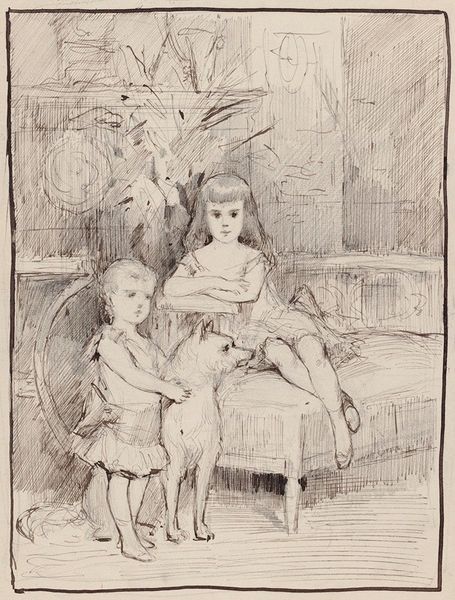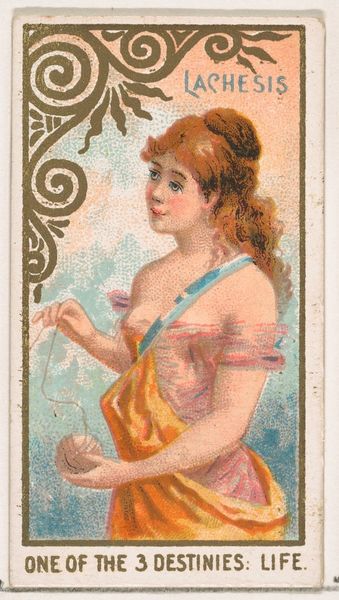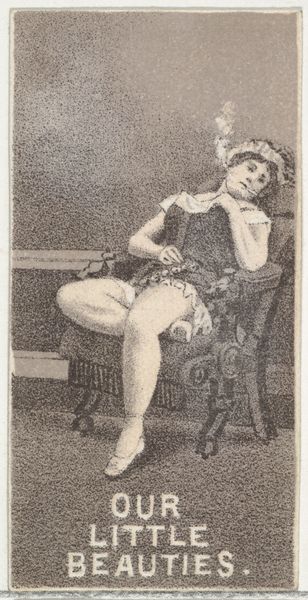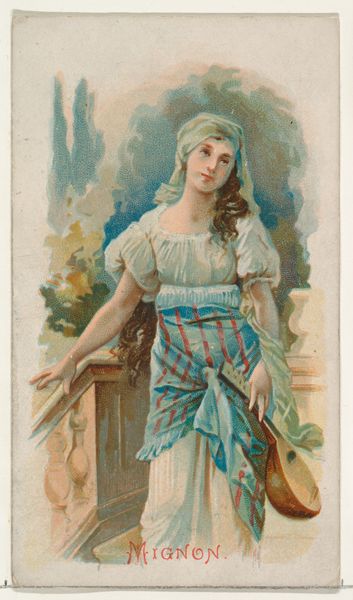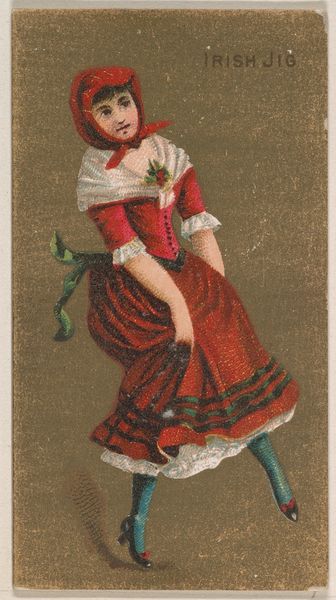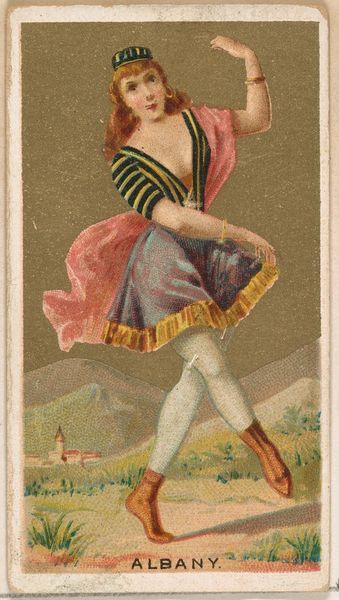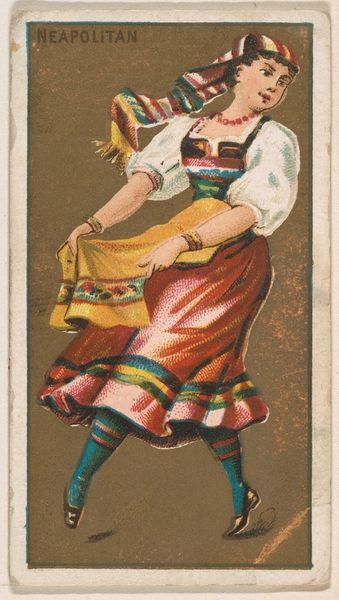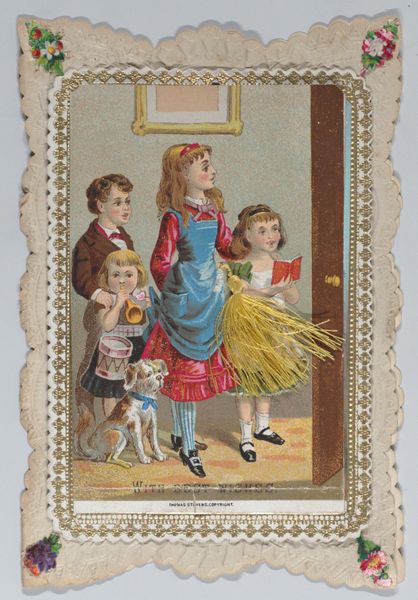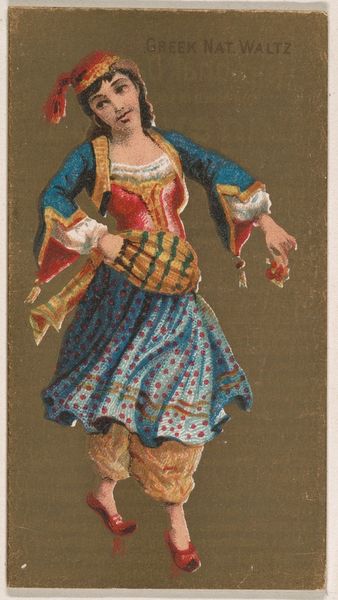
#
portrait
#
possibly oil pastel
#
oil painting
#
acrylic on canvas
#
portrait head and shoulder
#
underpainting
#
painting painterly
#
animal drawing portrait
#
lady
#
portrait art
#
female-portraits
#
watercolor
#
fine art portrait
Copyright: Public domain US
Curator: Here we see Zinaida Serebriakova's "Portrait of a Ballerina E.A. Svekis," created in 1923. What's your first take? Editor: A certain subdued theatricality, I'd say. The color palette feels muted, almost dreamlike, lending the figures an ethereal quality. It looks as if it may have been executed in pastel, creating an interesting texture on the surface. Curator: The piece immediately recalls to mind similar compositions by Degas and Renoir of dancers. The depiction of dancers—and ballet as a cultural institution more broadly—carried certain connotations, right? Of femininity, grace, beauty... and rigorous discipline. Editor: Indeed. Semiotically, we're seeing a codified representation. Notice the careful arrangement of shapes, the juxtaposition of rounded forms with more angular lines. The ballet skirt functions almost as a halo, defining her space. Curator: And there's the fascinating doubling – or perhaps multiplication – of the female form, an echo of the figures both clothed and unclothed in the background. One of which strikes me as deeply anxious, almost disturbed in her vulnerability. Editor: The layered effect does lend the composition an interesting psychological dimension. Are these other dancers? Reflections of the main subject’s inner states? Serebriakova masterfully complicates a traditional subject through these devices. Note how the primary dancer is positioned almost centrally within the frame, anchored by the geometric pattern of her skirt. Curator: The artist came from an aristocratic Russian family deeply embedded in the arts. This background, certainly, influenced her perception and artistic vocabulary. Considering the ballet dancers as a repeated motif – these were representations freighted with privilege and grace and then the turmoil of revolution just before this piece. The anxiety you describe of the nude in the background is something that has changed significantly in terms of our relation with art history, and what such a representation means in light of cultural trauma in a way it would not have to contemporary viewers. Editor: A disruption in form creating new cultural possibilities. Beautifully said. This is not simply a portrait of a dancer but a complex, multi-layered reflection on performance, femininity, and societal expectation. Curator: Exactly, a reflection on that very visual language of those themes. The artist builds something more complex. Editor: Agreed. It offers so much to consider, through its thoughtful construction of form and space.
Comments
No comments
Be the first to comment and join the conversation on the ultimate creative platform.
